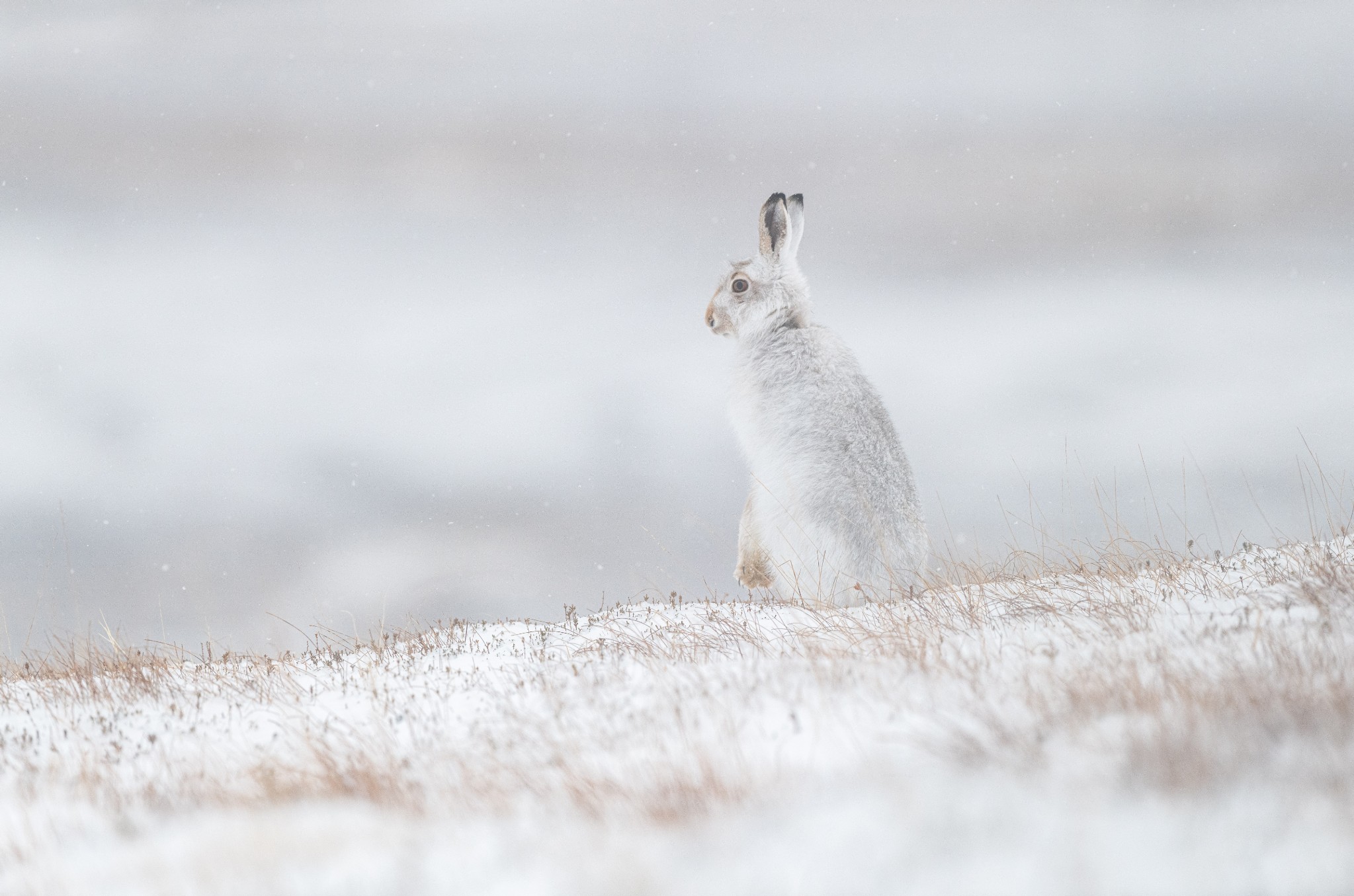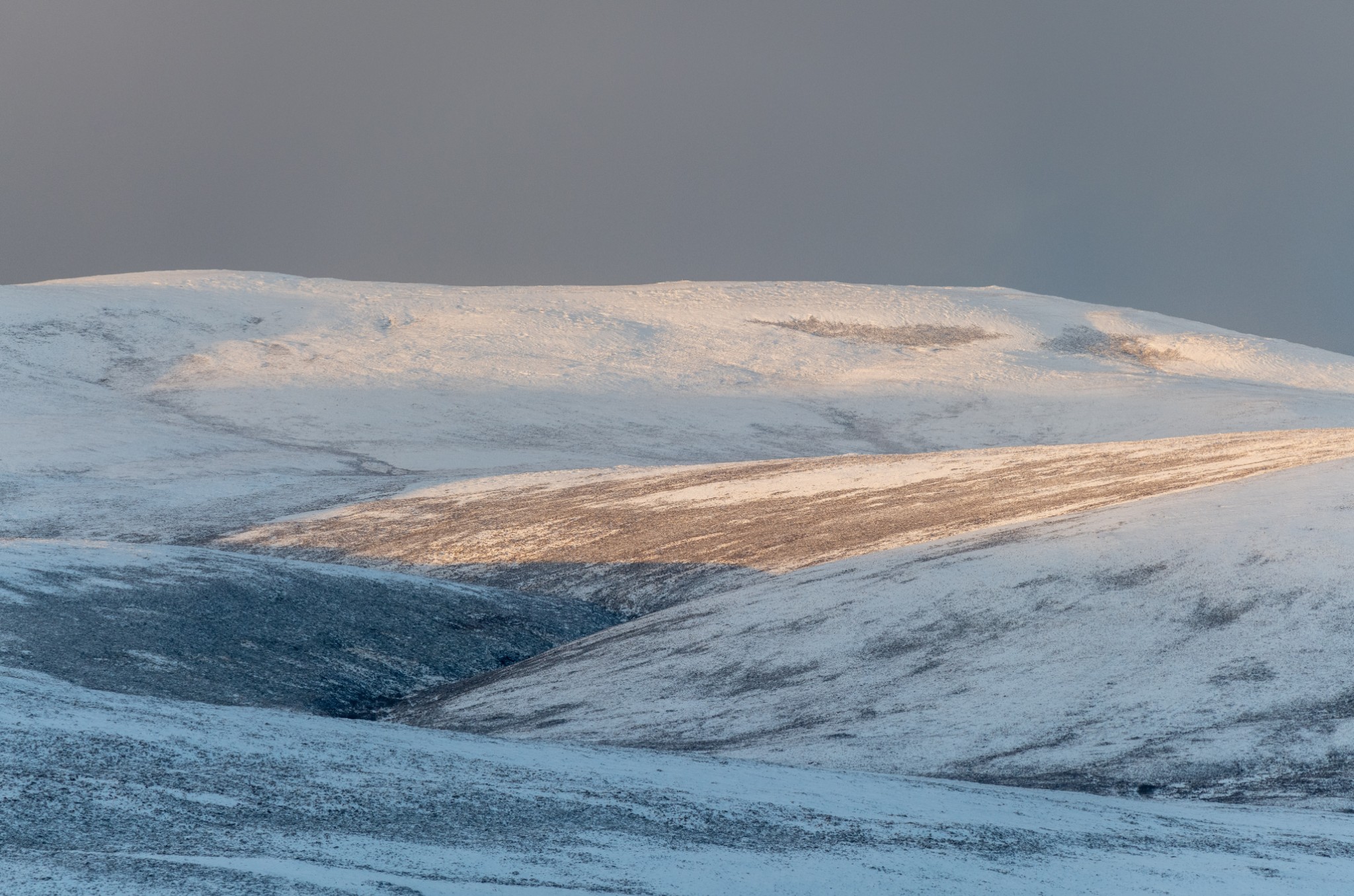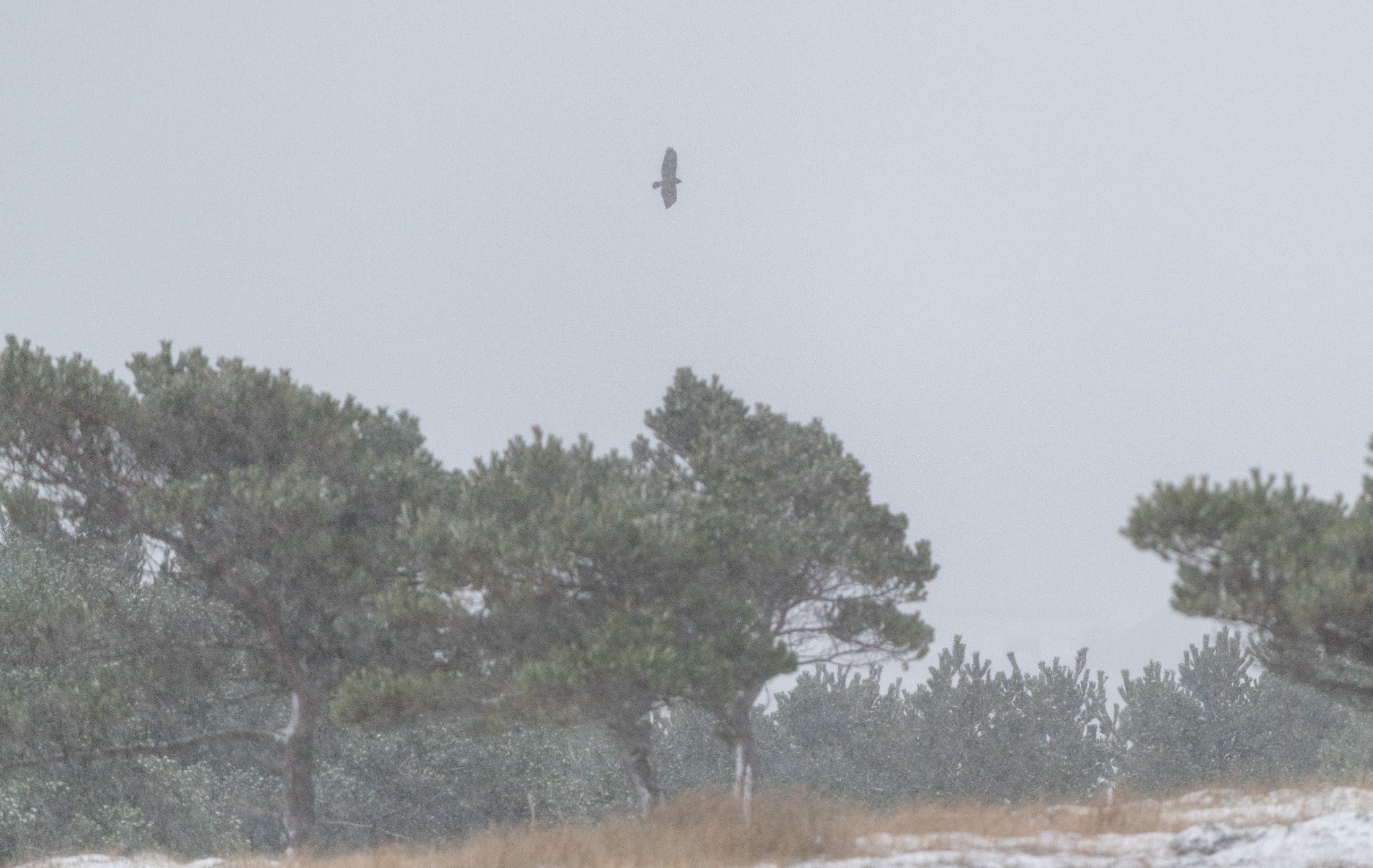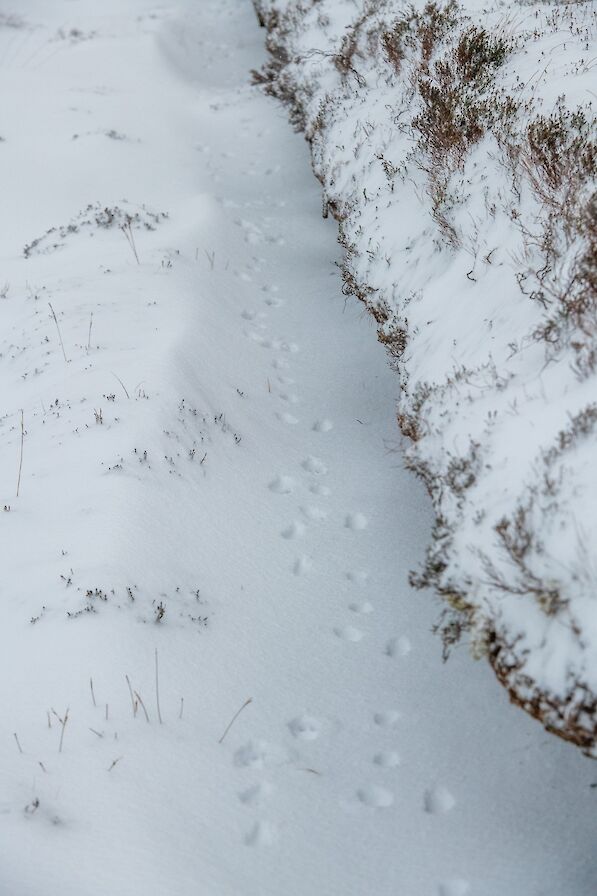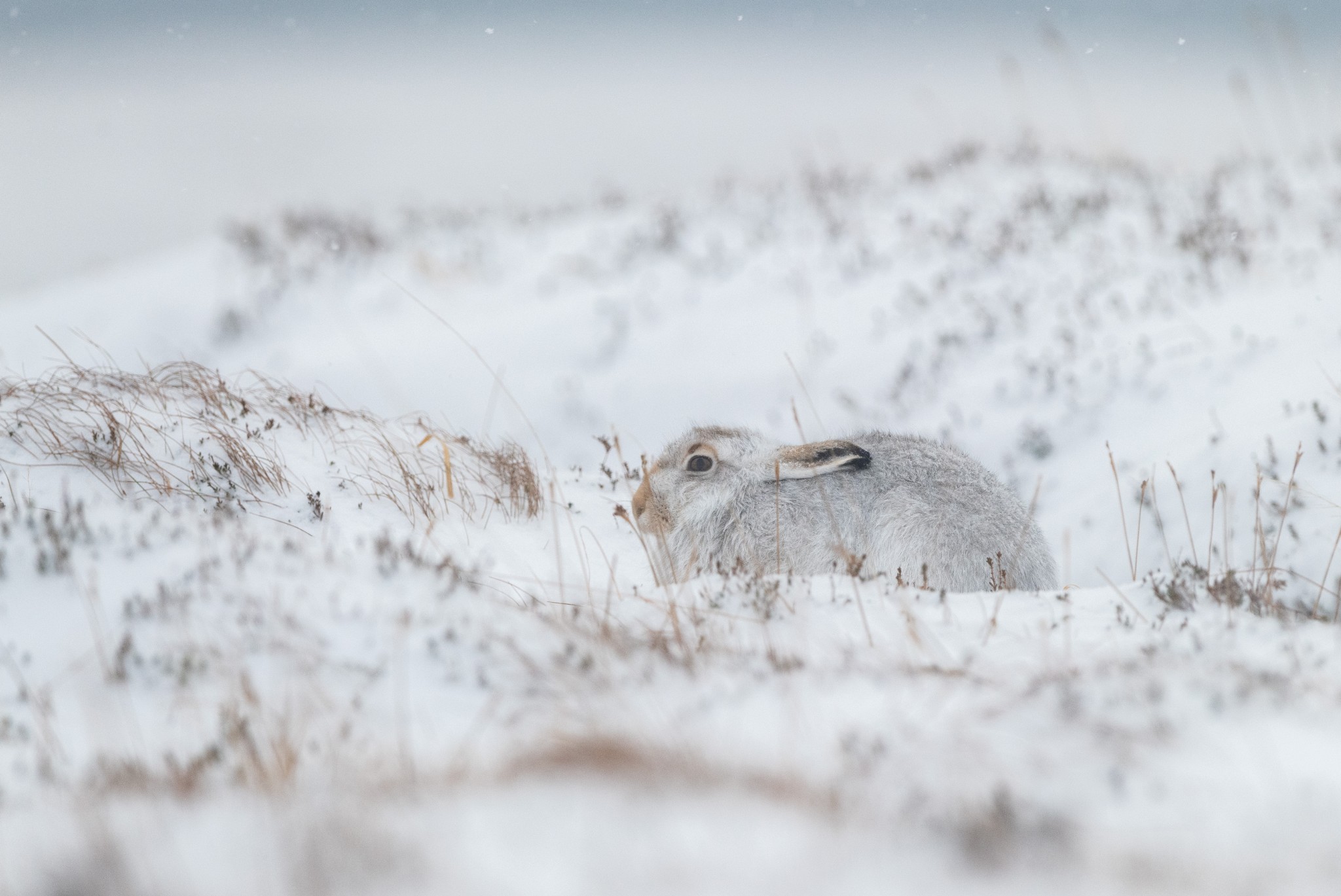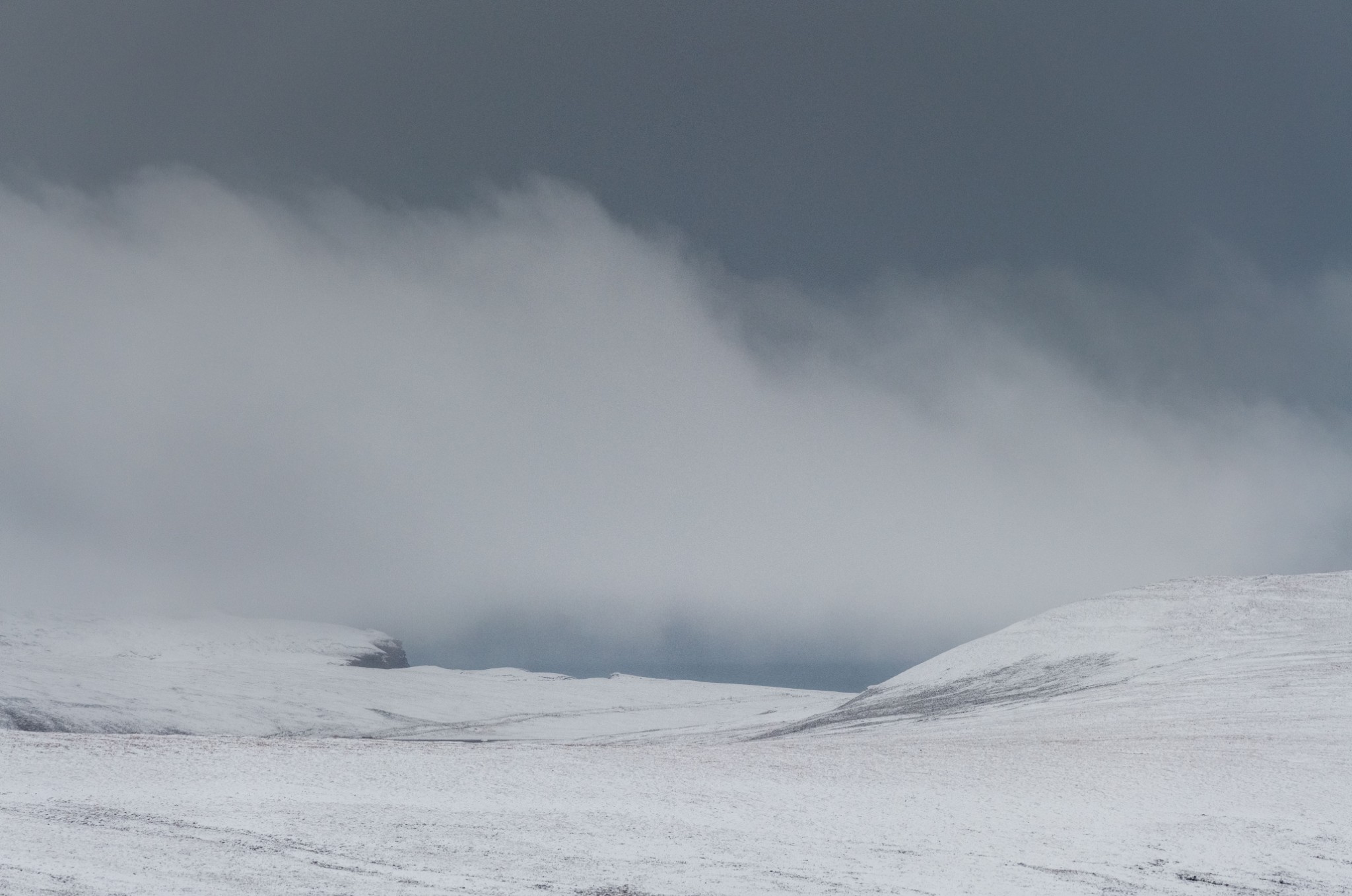It’s still dark as I set off from Kirkwall to catch the ferry from Houton to Lyness.
I’m a touch nervous as I feel the back tyres of my car squirm a little underneath me, and even more so when I see a car stopped in the road, unable to make it up the Hobbister Brae in the opposite direction as snow drifts block its passage.
I’ve made it this far however and with amber warnings for snow and wind forecast for the coming days this might be my best opportunity to get into the Hoy hills. I want to see a creature which is perfectly adapted to surviving in cold, snowy conditions and Hoy is the only island in Orkney in which to find it - the mountain hare.
The lights of the ferry illuminate not snow as it falls, but sleet. I have faith in the Met Office though and shortly this should turn to snow, right about the time the ferry lowers its bow ramp. I plan to be out all day and so sort out my gear, hot drinks and clothes in the Lyness waiting room before setting off. An over-friendly dog however is determined to delay me and keeps stealing the extra pair of socks I’m trying to get on my feet.
I’m not confident my car will be able to make it up the steep road and so I head off on foot. My hunch was confirmed later in the day when I fall flat on my back coming back down the track. I made a rough-looking ‘snow angel’ as I landed and on clearing the snow underneath me, I see that it’s a smooth layer of ice.
As I crunch underfoot the driven snow hits me from the north-west and I am glad of the snood covering my face, my warm breath trapped next to my skin. I opt for shelter in some gnarled woodland to allow the shower to pass. As well as the beautiful native wood to be found nestled in the hills farther north at Berriedale, Hoy also has several blocks of planted coniferous trees dotted amongst the hills. I’m not entirely sure of this plantation’s provenance though most of them were experimental undertakings in the early 1950s to deem whether Hoy might for suitable for commercial forestry.
Hidden from the wind the flakes land gently here. But this Narnia-like scene is awoken by a flash of bright orange as it skims above the white surface. It’s hard to imagine a bird more at odds with the serenity here than the missile-esque male sparrowhawk that’s just torn through the trees. Sparrowhawks have certainly benefited from these trees as nesting sites, even if they didn’t grow in a manner that meant future profits.
A raven is very close by too, somewhere above me. It calls out ‘kronk kronk’ and I wait three or four seconds before another calls back, the faintness of its reply makes me think it’s perhaps several hundred metres away. I imagine their conversation went something like this - ‘Hey, do you know there’s a man sitting underneath our tree?’ ‘Really? what’s he doing?’
But as I leave the trees, I see that they are already airborne, and between them they are making short work of harassing a buzzard, more likely the subject of their chat. I like to think that this was premeditated, a spoken plan in place to teach this intruder a lesson as soon as the buzzard alighted.
I finally make my way uphill, now off the track with springy heather underfoot, and I sink up to my knees in places. I was here last spring and counted nine mountain hares in total. They were white as they will be today but, on that day, they stood out like sore thumbs against the dark heather. Spotting them today will be altogether more difficult.
In a way this is comforting, the advantage with the hares for a change. They evolved to turn white for a reason of course, to take advantage of the snow, their white pelage a perfect camouflage. Until relatively recently they had little to fear in these hills but now the Hoy sky is graced with not only the wings of sea eagles, but those of the golden eagle too. How much harder their already superb eyes must have to work to spot a motionless mountain hare settled in the snow.
My own eyes aren’t quite so superb but I do see something right on the horizon. Unfortunately, it’s the rear end of a mountain hare as it bounces beyond view. I scan the valley to the north of me but there’s no movement and I experience a pang of doubt. I forget though that this thick covering of snow plays into my hands, the paw prints of mountain hares are everywhere, the more I look the more I see.
Hares feed primarily at night and it may be that these fresh prints are the result of individuals foraging short ago. I follow a set of what look like fairly fresh tracks and I know from previous experience that mountain hares like to use the shelter of peat banks. Sure enough, the tracks start to run parallel with a cut peat bank and at the head of it sits a mountain hare. It’s sitting in what is known as a ‘form’ - to all intents and purposes a form is little more than a scrape or indentation in the ground, they don’t use burrows in the way rabbits do.
What a beautiful creature it is, a grey-ish white body and black ear tips. Its nose is a soft ginger and mirrors almost perfectly the colour of the sparse grasses poking through the snow. As it’s settled in its form, I leave it be and head west along a ridge in search of other hares. As I do my forehead stings from the cold and the now heavy snowfall seems to hit me right in the eyes. As the low clouds clear a little, I can now see all the way out to the cliffs on the Atlantic coast.
But something feels wrong, I feel unnerved and suddenly very alone. There’s an atmosphere which I have never experienced before, a strangeness in the landscape. It takes me a minute to understand the situation, as if some deeper sense had to be awakened.
I realise what it is. There is no wind, not a gradual decrease once the stinging snow shower had passed, but an abrupt stop. The dark cloud that was dying over Scapa Flow had nothing behind it. It wasn’t alone however; it’s accompanied by silence. It is completely still and completely silent.
No background rumbles from planes or cars or boats. It feels so at odds with anything I’ve experienced before I don’t really know what to do, so I just breathe. What I do eventually notice however is that my tinnitus seems heightened, being in the wind is a white noise of sorts and neutralises the worst of the tinnitus.
It lasts perhaps two or three minutes then the spell is broken. A wisp of wind and the gurgling call of a red grouse breaking cover. I decide this is as good a place as any to have my lunch as there is only a few hours of daylight left and once finished I have a final scan of the hill. I pass peat banks adorned with icicles, the icicles themselves with a dusting of snow. It’s beyond this bank that I see an alert hare, and it’s me it’s alert to.
It doesn’t hang about and I feel annoyed at myself for not having seen it sooner. But as I peer over the ridge, I can see that it has already settled down again close by. I admire its fur though my binoculars and wonder perhaps if the strangeness in the landscape had been a message telling me to slow down, to take more care and more notice.
The hare’s grey underfur is especially soft allowing it to live in cold conditions few other mammals can tolerate. As I watch it, I feel torn. This area is earmarked for wind farm development and the physical activity is likely to at least move these hares away from this area in the short term. But then animals like these, those most adapted to Arctic conditions, are some of those most at risk from climate change. The temperature on the day I sat down opposite these hares was -3C. The temperature in the last week of January in Kinlochbervie in the Scottish Highlands was an incredible 19.6C. The climate is askew.
I’m currently reading ‘The Nature of Winter’ by Scottish nature writer, Jim Crumley. He speaks about the extinction of the Scottish winter as we’ve known it and how it’s becoming hijacked by autumn. As the days start to lengthen, these mountain hares will start their moult back to their brown summer coat. As the wind suddenly picks up, the fine snow that’s gathered atop the peat banks bows past the hare. The sky behind it is an ominous inky colour.
I say thank you and good luck to the hare and make my way back to the ferry and another nervous drive home.
Raymond is a wildlife filmmaker who also offers bespoke Orkney wildlife tours and one-to-one wildlife photography tuition. Find out more via his official website. You can also find him on Facebook, Twitter and Instagram.
